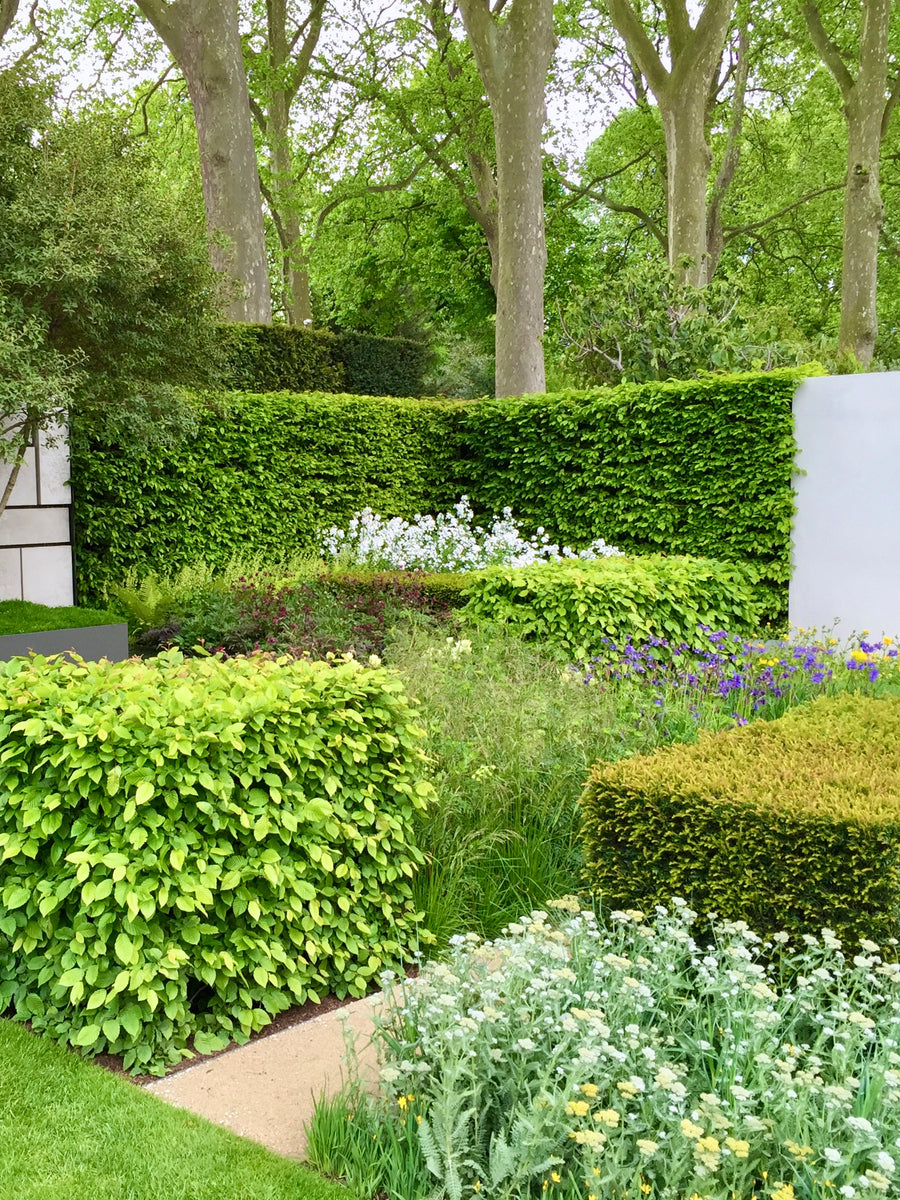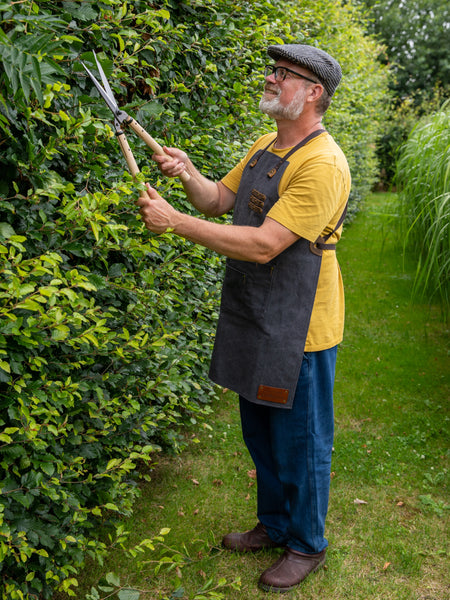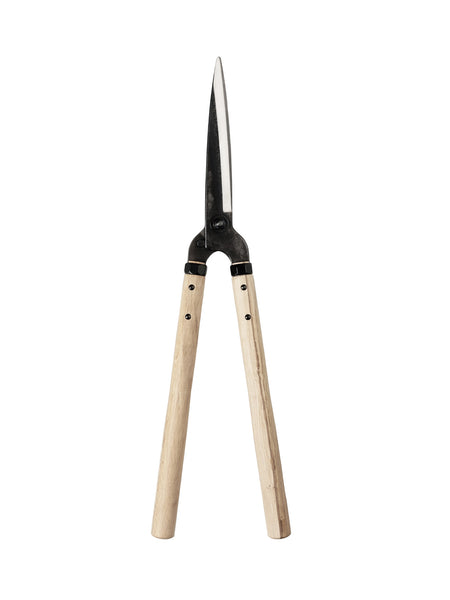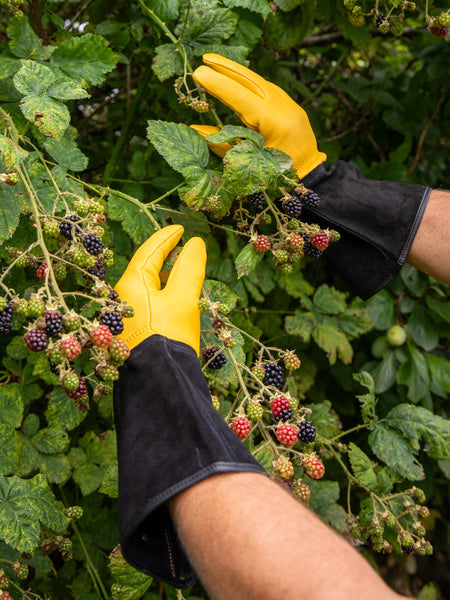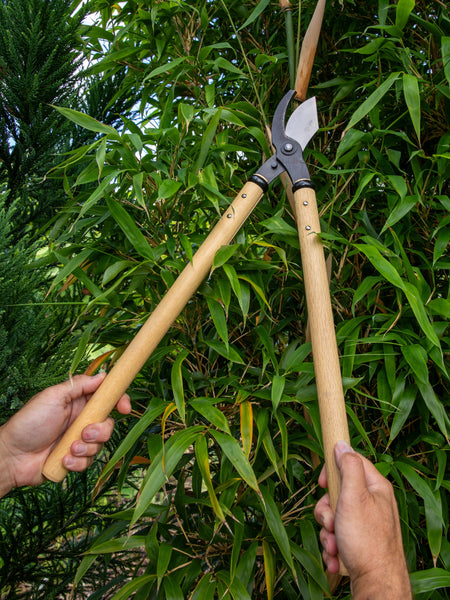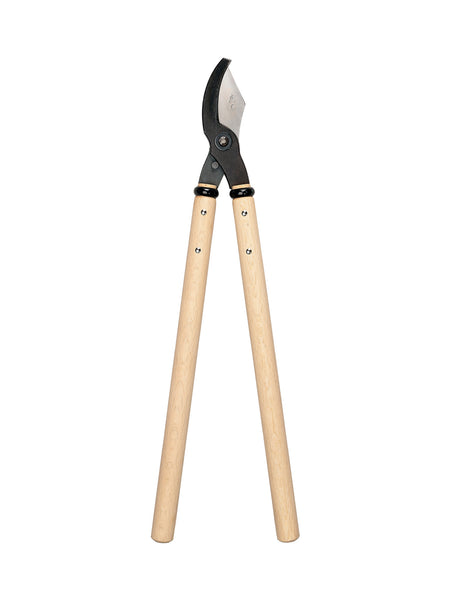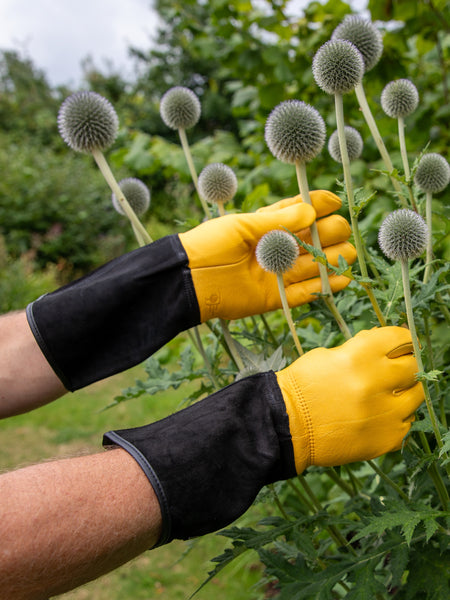Neat and formal or wild and voluptuous, hedges are often the most attractive and wildlife-friendly means of creating a boundary, framing a view or subdividing a garden. They can be bold and structural, romantic and flower-filled or thorny and impenetrable, but all hedges have one thing in common - a need for regular maintenance. Uncared for, hedges can quickly become unhealthy, untidy and voluminous, swallowing up significant amounts of space: that’s why we trim them - to keep them vital, attractive and within the boundaries we set for them.
Late summer is when you should cut established, formal hedges. There are two reasons for this:
- It’s when new growth is beginning to slow. Cutting now means that the hedge won’t grow a lot more before winter and will stay looking neat until spring.
- Nesting birds have moved on, but you should always check that they’ve vacated before setting to work with your shears.
Informal hedges, featuring a mixture of plants, should be pruned according to the plant type. Spring-flowering shrubs like forsythia and lilac benefit from a trim in early summer, after flowering, whilst those that flower later or produce berries, haws and hips are best left until the following spring.

Pleached limes form a hedge on stilts in the Lime Walk at Sissinghurst Castle
Pleaching, cloud-pruning, topiary, hedge-laying and restorative pruning are techniques that take a little more explaining. I’ll skip over these for now.
New hedges, by which I mean those that have yet to achieve their intended shape and volume, require ‘formative pruning’. The purpose of formative pruning is to encourage the development of a thick, bushy structure throughout, rather than a lanky cluster of stems with a dense outer layer. In this guide, I focus on the routine maintenance of established hedges.
Formal Hedges
Hedges with crisp, dense, even sides and a flat or domed top are considered formal hedges. Where appearances are important, they are trimmed in mid as well as late summer. What’s important is to keep them slim - formal hedges should not need to be any more than 60cm wide - as well as slightly tapered so that they’re wider at the bottom than at the top. Tapering, also known as a ‘batter’, allows light to reach the lower leaves. In turn, this stops the bottom of the hedge from becoming bare.
Formal hedges are usually trimmed with handheld shears or if there are lots to be done, powered shears. Any tools you use should be sharp and well maintained to reduce the strain on your body and create a clean cut. It’s wise to protect your hand and forearms with gauntlet gloves and wear a pair of goggles, even if you wear spectacles. Start at the base of the hedge, moving upwards. That way, the clippings will fall straight to the ground when they fall, rather than getting caught up in the shaggy growth below. If your hedge borders a lawn, path or gravel, spreading an old sheet or tarpaulins below makes clearing up the clippings easier. If you’re working from a ladder or scaffold, the usual advice applies: make sure the ground is firm and level and don’t overstretch. Power tools should never be used above shoulder height.

An immaculately maintained yew hedge and lawn at Sissinghurst Castle
It’s fiendishly difficult to keep a straight line by eye unless you are experienced at hedge trimming. Set yourself up with a guide line strung between two sturdy supports and use a spirit level to ensure it’s sitting straight. Bamboo canes make a good guide to keep the sides even. Wooden templates can be used to help maintain complex hedge profiles, but for most of us, a straightish edge is all we’re after. Take your time and keep stepping back from the hedge to see how you’re doing. Don’t fret if you make a mistake and the result is a bit wobbly: hedges are living things, any bumps and dips can be evened-out next time you trim.
A Few Extra Pointers:
- Avoid pruning hedges during hot, dry weather, but prune them well before your first frost date. Try to choose a cloudy day to avoid the cut edges of the leaves going excessively brown - this is purely cosmetic and can’t always be avoided.
- Cut large-leaved, evergreen hedges (for example, cherry laurel (Prunus laurocerasus)) with secateurs to avoid creating a wall of half-cut leaves that will turn brown at the edge, hanging around looking ugly for months.
- If you encounter any stems thicker than a few millimetres, stop using shears and cut them using secateurs or loppers.
- Don’t cut into the hedge beyond the stems carrying healthy foliage unless you are sure the plant will regrow from what gardeners call ‘old wood’. Get this wrong and you could be left with a permanent bare patch. That’s never a good look.
- Prune conifer hedges no later than the end of August and heed the last point. Apart from yew, most conifers will not regrow from old wood.
- Water, feed and mulch hedges after trimming to nourish the roots, encouraging thick regrowth.
- Clean and sharpen shears and other pruning tools after use and always store them away dry.
SHOP PRUNING TOOLS

Box is a popular plant for low hedges, but not without its challenges!
Even a well-maintained formal hedge can become fat and bloated over time - this calls for the sort of careful restorative pruning you sometimes see if you visit a stately home garden. The process can take years. In a small, private garden, it might be more appropriate to rip the old hedge out and replant it.
Informal Hedges
Hedges that form billowing, soft, natural shapes with an open structure are classed as informal or rustic hedges. They’re perhaps not as structural or imposing as a formal hedge but can provide effective screening, good privacy, a gentler backdrop to other plantings, and a fantastic wildlife habitat. A well-maintained country hedgerow is the ultimate, mixed informal hedge, but a boundary planting of forsythia, hydrangeas, snowy mespilus, fuchsia or scented philadelphus would also count.
Maintaining an informal hedge is generally easy and a case of removing flowered stems, wayward shoots and excessive growth. Use loppers to prune out old stems. Take care when dealing with thorny plants such as roses, pyracantha, hawthorn and berberis, especially if animals and children are running around. Genuine country hedges can be ‘laid’, a skilled craft like dry stone walling that people train for years to master.
The key thing with an informal hedge is not to attempt to make it look formal - the result will resemble the poor, tortured shrubs in a supermarket car park. Go with the plant’s natural outline and remove old stems after flowering, unless they lead to attractive berries and hips. In this case, prune after the fruits have gone. If you’re uncertain how to tackle a mixed, informal hedge, prune each plant as you would a stand-alone shrub and don’t treat everything in the same way. You may sacrifice flowers, fruit or both.
10 Popular Hedging Plants and When to Prune Them
- Beech (Fagus sylvatica) - late summer (mid-August to mid-September in the U.K.)
- Box (Buxus sempervirens) - early summer and again in late summer (early June and again mid-August to September in the U.K.)
- English lavender (Lavandula angustifolia) late summer after flowering (no later) with a second opportunity in spring (late August or between March and May in the U.K.)
- Privet (Ligustrum ovalifolium) - every 4-6 weeks through summer and autumn (June to September in the U.K.)
- Leyland cypress (‘leylandii’) (× Cuprocyparis leylandii) - every 6 weeks from late spring until late summer (April until August in the U.K.)
- Rugosa rose (Rosa rugosa) - trim in late summer, removing old stems but keeping the decorative rose hips (mid-August to mid-September in the U.K.)
- Hawthorn (Crataegus monogyna) - late spring after flowering and again in early autumn but be especially alert to nesting birds for the first cut (May and August/September in the U.K.)
- Cherry laurel (Prunus laurocerasus) - as required between early summer and autumn. Cherry laurel is far too large and vigorous for most situations in which it’s planted so pruning little and often with secateurs is best to keep it under control (June to September in the U.K.)
- Yew (Taxus baccata) - formal hedges need trimming between late summer and mid-autumn and again in spring to keep them immaculate (August to October and again in April in the U.K., if desired).
- Evergreen berberis (Berberis darwinii) - early to mid-summer, or in autumn or winter after fruiting to avoid losing the berries (June/July or October-February in the U.K.)
See Also

A wonderfully wobbly yew hedge at Walmer Castle
